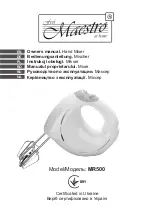
1 – Introduction
4
TASCAM DM-24 Automation
Automated Controls
The following mixer controls of the DM-24 can be
automated:
• Fader levels
• Mutes
• Panning (including surround panning)
•
EQ
settings:
•
Gain, Frequency, Q, EQ On/Off switching
•
Individual EQ band
TYPE
switching between
High/Low Pass Filter, Peaking & Shelving
• Auxiliary send levels and Pre/Post switching
• Auxiliary master send levels
• Buss master levels
•
GATE
settings:
•
THRESH
old
•
RANGE
•
HYST
eresis
•
ATTACK
•
HOLD
•
DECAY
•
COMP
ressor settings:
•
THRESH
old
•
RATIO
•
ATTACK
•
RELEASE
• Library recall
The following mixer controls of the DM-24 cannot
be automated:
•
DIGI-TRIM
• Individual EQ band On/Off switching
• Effect settings
• Buss assignments
• MIC TRIM
• Control Room monitor switching
• LCD navigation
• Transport control
• Fader layer switching
• Global mixer setup parameters
Moves for different mixer controls do not have to be
automated in the same pass. Just as in multi-track
recording, it is possible to concentrate on one spe-
cific control at a time, building up the automated mix
over a number of passes. The DM-24’s automation
system allows this to occur by intelligently switching
automation modes transparently on a per control
basis.
This work done by the DM-24 automation system
provides a high degree of flexibility while not requir-
ing constant attention from you. Of course, the
DM-24’s automatic mode switching may be over-rid-
den at any time for “power user” operation.
The automation is synchronized to external time
code. This could be Linear Time Code (LTC or com-
monly referred to as SMPTE/EBU) or MIDI Time
Code (MTC).
The event resolution for mix moves on the DM-24 is
one event per quarter time code frame. At a time
code rate of 30 frames per second, non-drop, this
equates to about 5 milliseconds per event.
A Note on Touch-Sensitive Faders
When using the touch-sensitivity of the faders in
automation, you should always use your fingers to
touch the faders. If you use a pencil or ruler, etc., or
even your fingernails to touch them, the fader will
not register as having been touched.





































